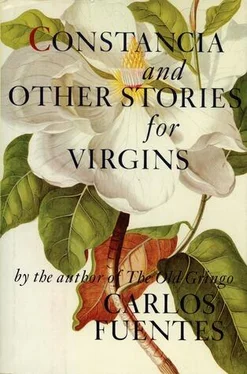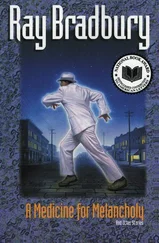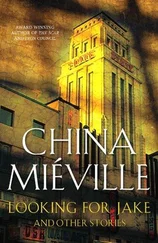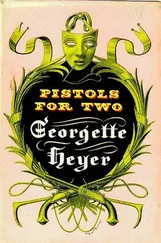Vineyard Haven,
Massachusetts
Summer 1986
The Prisoner of Las Lomas
To Valerio Adami, for a Sicilian story
1
As incredible as this story is, I might as well begin at the beginning and continue straight on to the end. Easy to say. The minute I get set to begin, I realize I begin with an enigma. It follows that difficulties ensue. Oh, fuck! It can’t be helped: the story begins with a mystery; my hope, I swear, is that by the end you’ll understand everything. That you will understand me. You’ll see: I leave out nothing. But the truth is that when I entered the sickroom of Brigadier General Prisciliano Nieves on February 23, 1960, in the British hospital then located in the Avenida Mariano Escobedo (present site of the Camino Real Hotel, to orient my younger listeners), I myself had to believe in the enigma, or what I was planning would not succeed. I want to be understood. The mystery was true. (The truth was the mystery.) But if I was not myself convinced of it, I would not convince the old and astute Brigadier Nieves, not even on his sickbed.
He was, as I said, a general. You know that already. I was a young lawyer who had recently received my degree — news for you and for me. I knew everything about him. He, nothing about me. So when I found the door to his private room in the hospital ajar and pushed it open, he didn’t recognize me, but neither did he draw back. Lax as security is in Mexican hospitals, there was no reason for the brigadier to be alarmed. I saw him lying there in one of those beds that are like the throne of death, a white throne, as if cleanliness were the compensation that dying offers us. His name Nieves means snow, but lying in all that bleached linen he was like a fly in milk. The brigadier was very dark, his head was shaved, his mouth a long, sourish crack, his eyes masked by two thick, livid veils. But why describe him, when he was so soon gone? You can look up his photo in the Casasola Archives.
Who knows why he was dying? I went by his house and they said to me:
— The general’s bad.
— It’s just he’s so old.
I scarcely noticed them. The one who spoke first seemed a cook, the second a young girl servant. I made out a sort of majordomo inside the house, and there was a gardener tending the roses outside. You see: only of the gardener was I able to say definitely, that man is a gardener. The others were just one thing or another. They didn’t exist for me.
But the brigadier did. Propped up in his hospital bed, surrounded by a parapet of cushions, he looked at me as he must have looked at his troops the day he singlehandedly saved the honor of his regiment, of the Northeast Corps, almost of the very Revolution, and maybe even of the country itself — why not? — in the encounter of La Zapotera, when the wild Colonel Andrés Solomillo, who confused extermination with justice, occupied the Santa Eulalia sugar mill and lined both masters and workers against its wall to face the firing squad, saying the servants were as bad as those they served.
— The one who holds the cow is as bad as the one who slaughters it.
So said Solomillo, helping himself to the possessions of the Escalona family, masters of the hacienda: quickly grabbing all the gold coins he’d found in the library, behind the complete works of Auguste Comte, he proposed to Prisciliano: —Take these, my captain, so that for once those who are as hungry as you and I may be invited to the banquet of life.
Prisciliano Nieves — the legend goes — not only refused the gold his superior offered him but, when it came time for the execution, he placed himself between the firing squad and the condemned and said to Colonel Andrés Solomillo: —The soldiers of the Revolution are neither murderers nor thieves. These poor people are guilty of nothing. Separate the poor from the rich, please.
What happened then — so the story goes — was this: the colonel, furious, told Prisciliano that if he didn’t shut up he would be the second feature in the morning’s firing; Prisciliano shouted to the troops not to kill other poor people; the squad hesitated; Solomillo gave the order to fire at Prisciliano; Prisciliano gave the order to fire at the colonel; and in the end the squad obeyed Prisciliano:
— Mexican soldiers do not murder the people, because they are the people, said Prisciliano beside the body of Solomillo, and the soldiers cheered him and felt satisfied.
This phrase, associated ever since with the fame, the life, and the virtues of the instantly Colonel and soon-to-be Brigadier General Don Prisciliano Nieves, surely would be engraved on the base of his monument: THE HERO OF SANTA EULALIA.
And now here I come, forty-five years later, to put a damper on the final glory of General Prisciliano Nieves.
— General Nieves, listen carefully. I know the truth of what happened that morning in Santa Eulalia.
The maraca that sounded in the throat of my brigadier Prisciliano Nieves was not his death rattle, not yet. In the dim light of the hospital, my middle-class lawyer’s young breath smelling of Sen-Sen mixed with Don Prisciliano’s ancient respiration, a drumroll scented of chloroform and chile chipotle. No, my general, don’t die without signing here. For your honor, my general: worry no more about your honor, and rest in peace.
2
My house in Las Lomas de Chapultepec has one outstanding virtue: it shows the advantages of immortality. I don’t know how people felt about it when it was constructed, when the forties were dawning. The Second World War brought Mexico a lot of money. We exported raw materials at high prices and the farm-workers entered the churches on their knees, praying for the war to go on. Cotton, hemp, vegetables, strategic minerals; it all went out in every direction. I don’t know how many cows had to die in Sonora for this great house to be erected in Las Lomas, or how many black-market deals lay behind its stone and mortar. You have seen such houses along the Paseo de la Reforma and the Boulevard de los Virreyes and in the Polanco neighborhood: they are architectural follies of pseudo-colonial inspiration, resembling the interior of the Alameda movie house, which in turn mimics the Plateresque of Taxco with its cupolas, towers, and portals. Not to mention that movie house’s artificial ceiling, dappled with hundred-watt stars and adorned with scudding little clouds. My house in Boulevard de los Virreyes stopped short of that.
Surely the Churrigueresque delirium of the house I have lived in for more than twenty years was an object of derision. I imagine two or three caricatures by Abel Quezada making fun of the cathedral-like portal, the wrought-iron balconies, the nightmare ornamentation of decorations, reliefs, curves, angels, madonnas, cornucopias, fluted plaster columns, and stained-glass windows. Inside, things don’t get any better, believe me. Inside reproduces outside: once again, in a hall that rises two stories, we encounter the blue-tile stairs, the iron railing and balconies overlooking the hall from the bedrooms, the iron candelabra with its artificial candles dripping fake wax of petrified plastic, the floor of Talavera tile, the uncomfortable wood-and-leather furniture, straight and stiff as if for receiving a sentence from the Holy Inquisition. What a production…!
But the extraordinary thing, as I was saying, is that this white elephant, this symbol of vulgar pretension and the new money of the entrepreneurs who made a profit off the war, has been converted, with time, into a relic of a better era. Today, when things are fast going downhill, we fondly recall a time when things were looking up. Better vulgar and satisfied than miserable but refined. You don’t need me to tell you that. Bathed in the glow of nostalgia, unique and remote in a new world of skyscrapers, glass, and concrete, my grotesque quasimodel home (my Quasimodo abode, my friends, ha ha! it might be hunchbacked, but it’s mine, all mine!) has now become a museum piece. It’s enough to say that first the neighbors and then the authorities came to me, imploring:
Читать дальше












